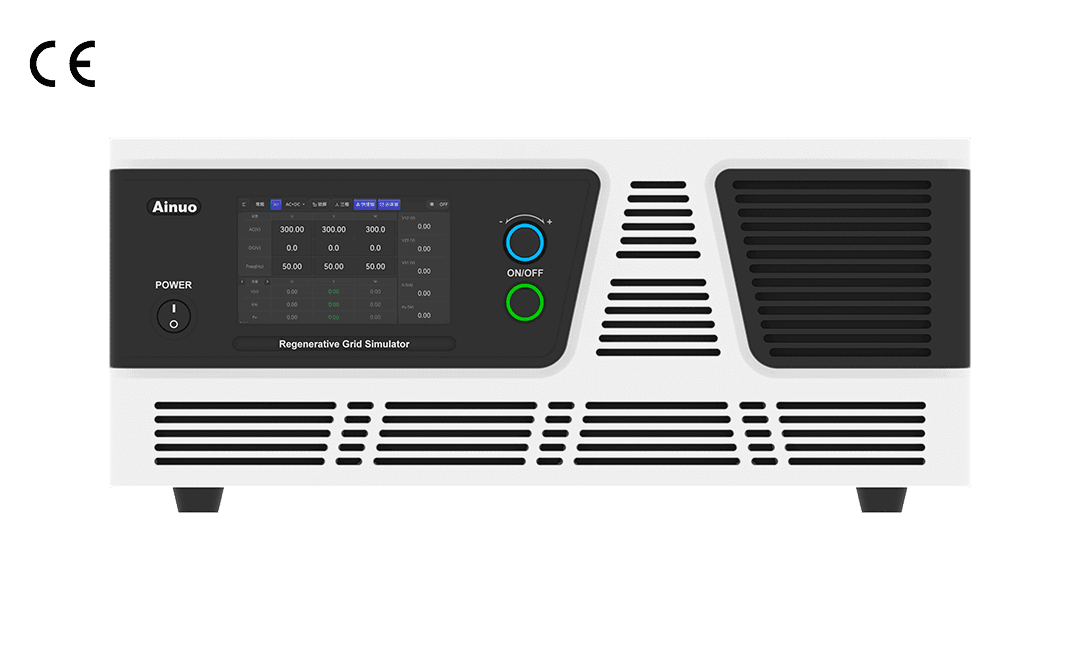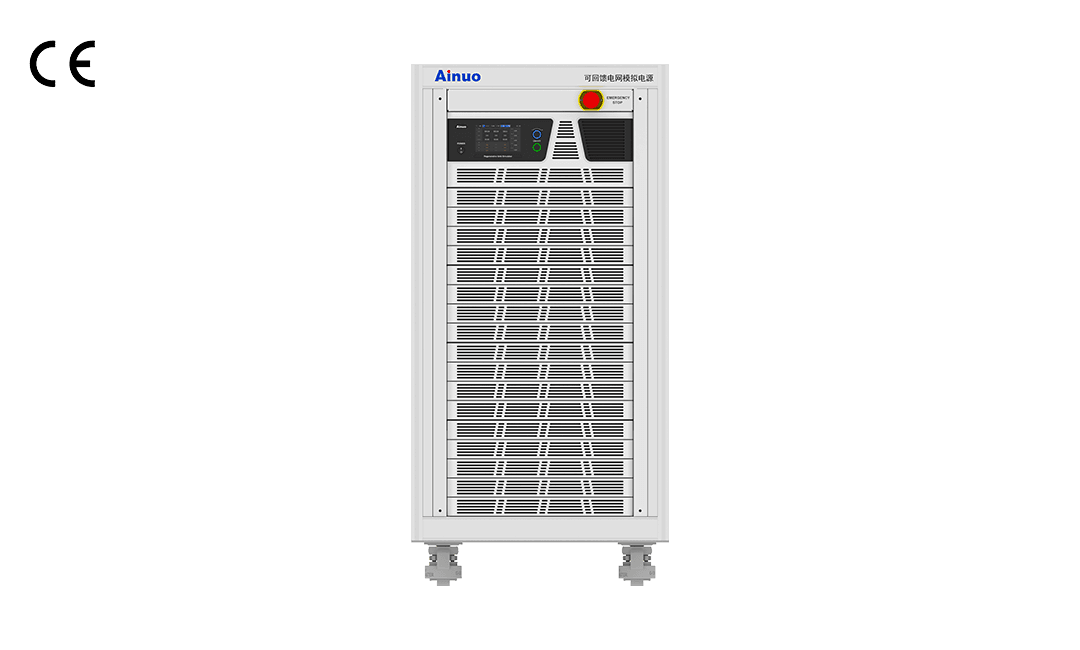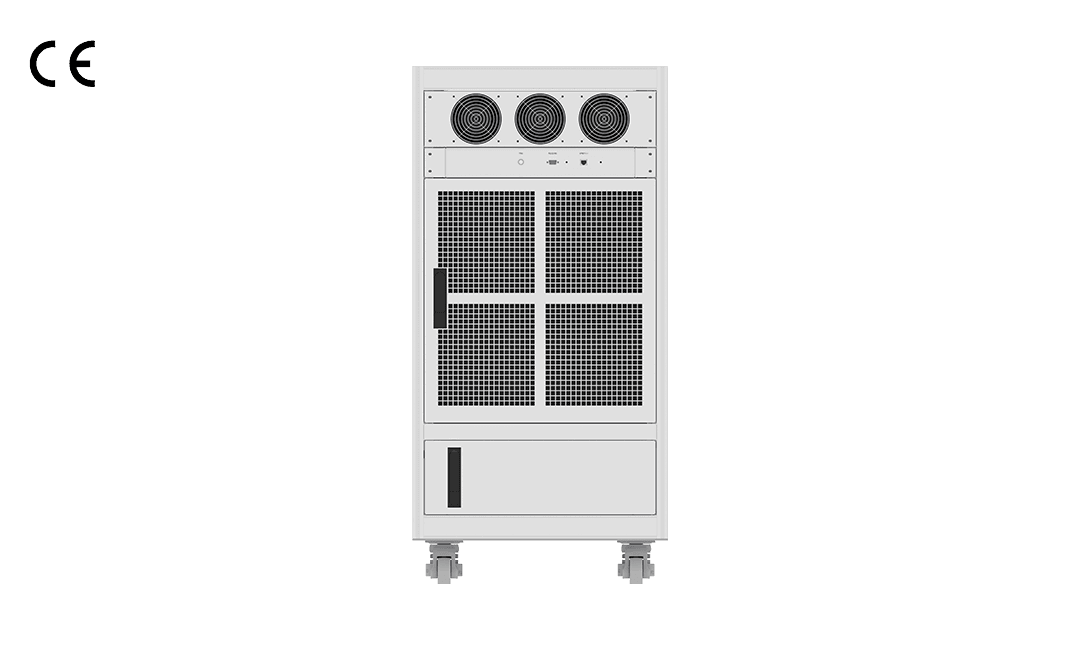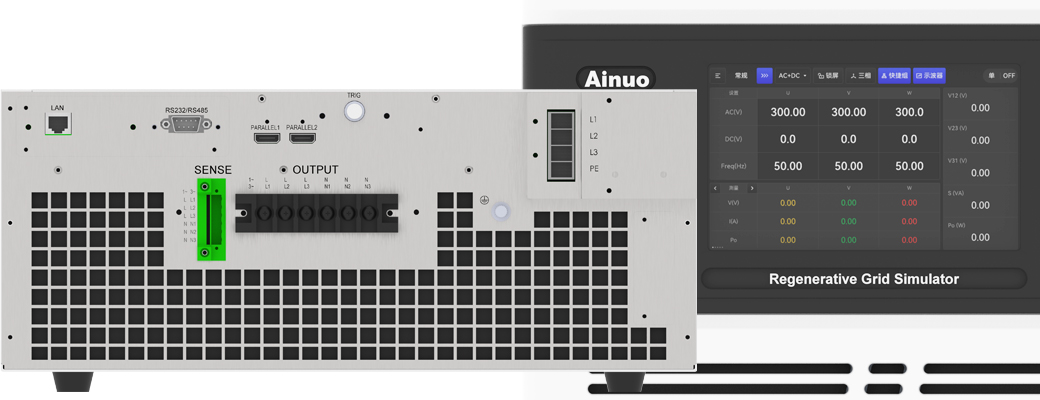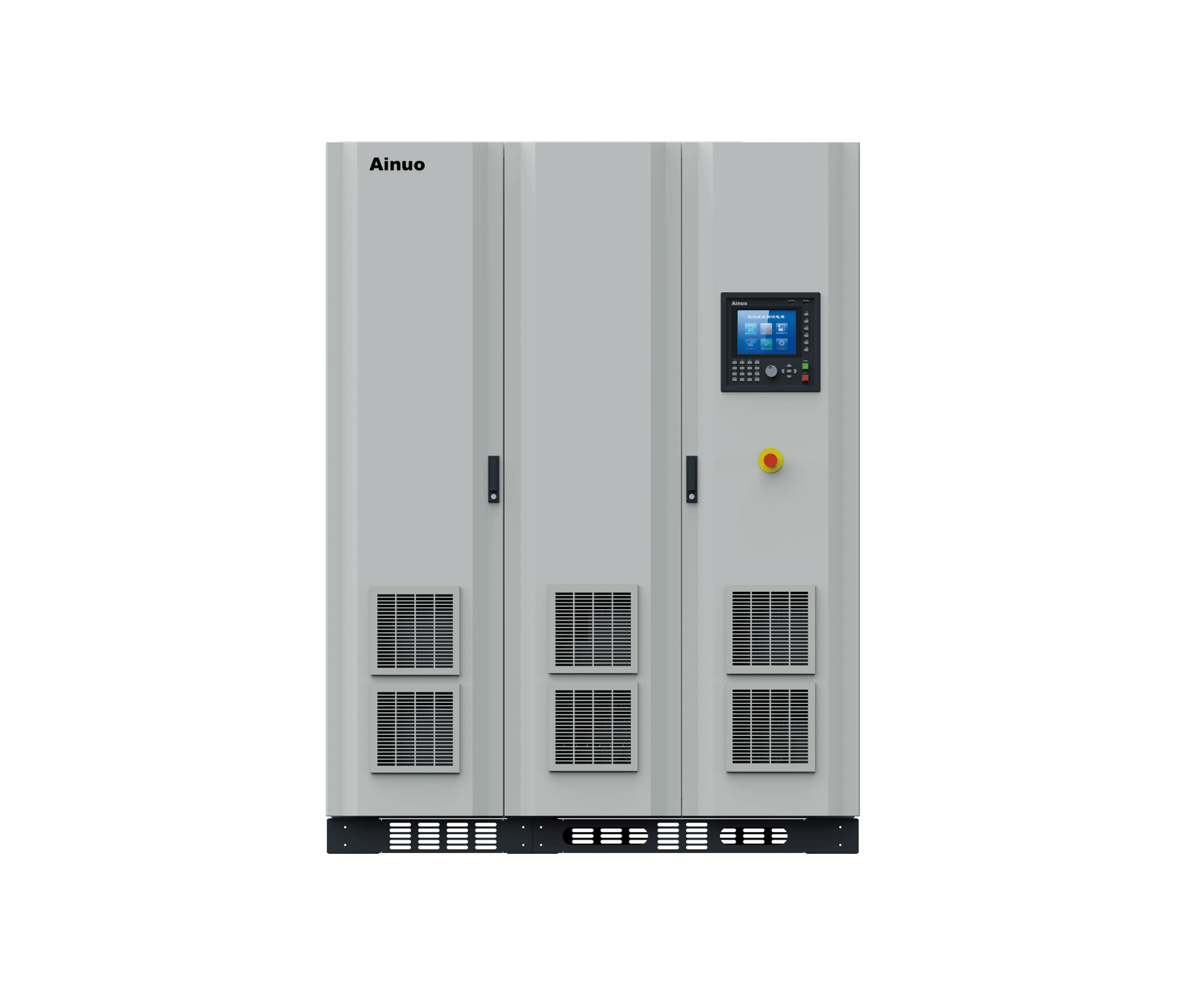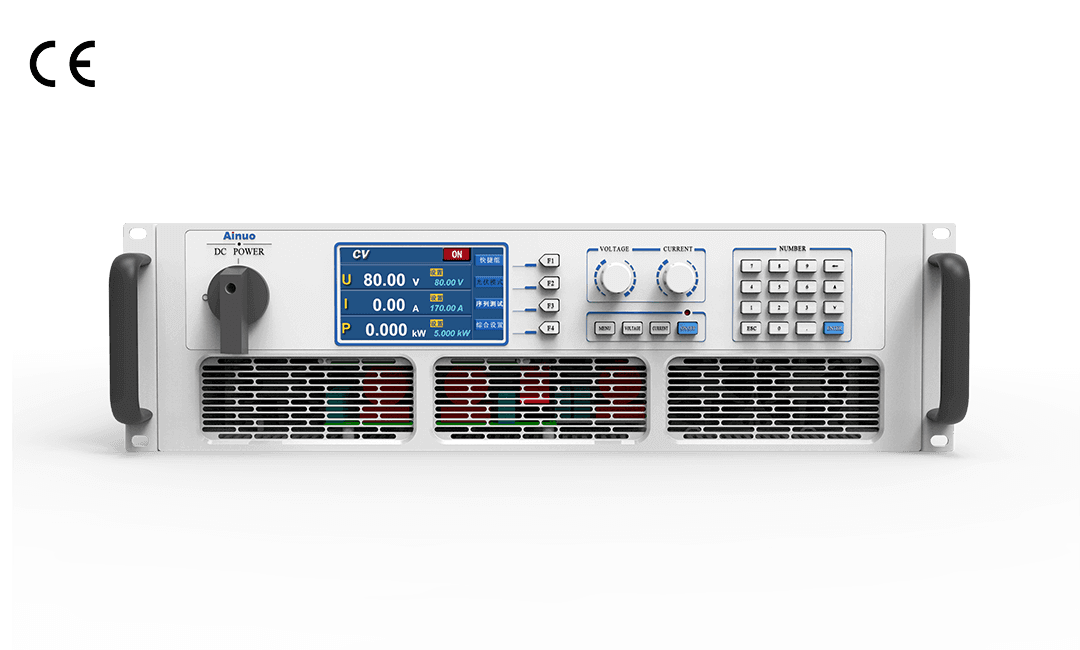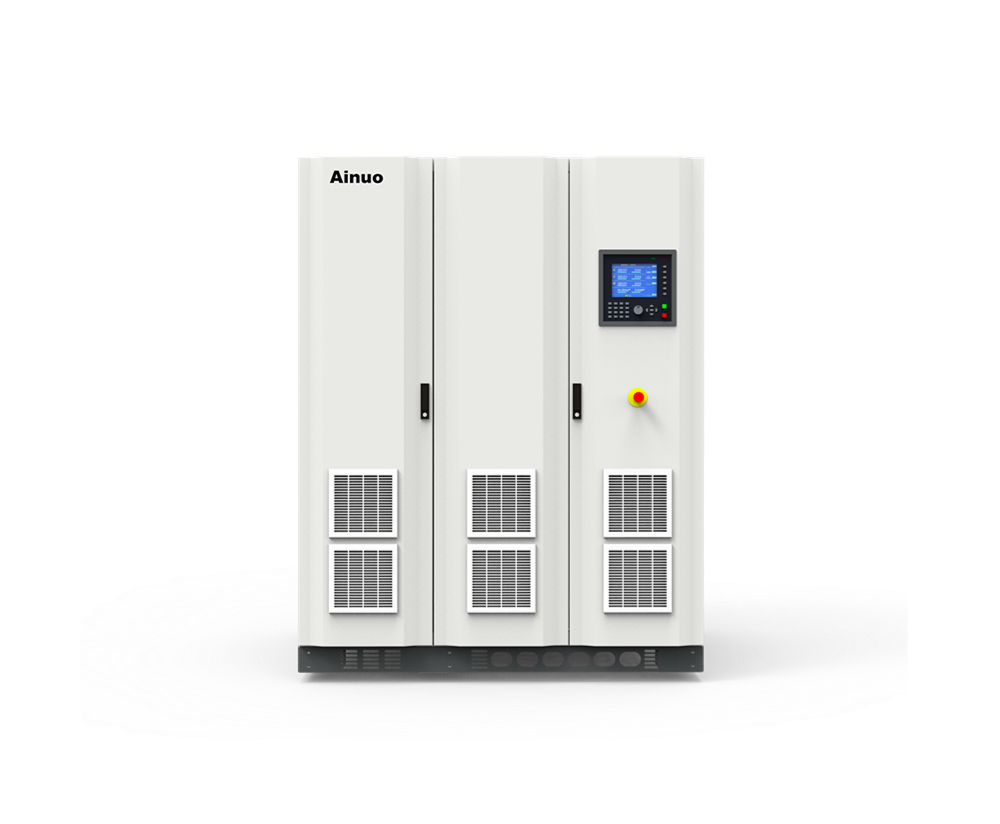AC+DC output mode: AC, DC, and AC+DC

Start-stop angle: in the conventional mode, the start-stop angles of the
waveform can be set to facilitate surge current tests.
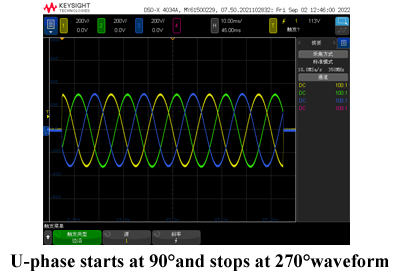
Output waveform can be set: the three-phase output waveform can be
independently set to select sine wave,square wave, triangular wave, clipped sine
wave, 30 sets of built-in waveforms, and 6 sets of user-defined waveforms.

Sequence mode: it has universally programmable settings, where each phase
of AC voltage, DC voltage,frequency, phase, waveform, and time can be
independently set according to single-step settings.Trigger phase and cycle
count can be set, and parameters of three phase outputs can be separately
configured. Any phase abrupt change/crossing test can be achieved.Rich sequence
combinations with high degree of freedom in parameter settings. By setting
different combined sequence parameters, high and low voltage crossing tests can
be completed. Minimum programming setting time is 1ms, capable of completing a
1ms stop test. Each sequence in each phase can independently set one of the 6
waveforms.


Pulse mode: it periodically changes the output state, where the power output
will cyclically vary between regular power supply and pulse voltage. Each phase
of AC voltage, DC voltage, frequency, angle, waveform, time, etc.can be
independently set.
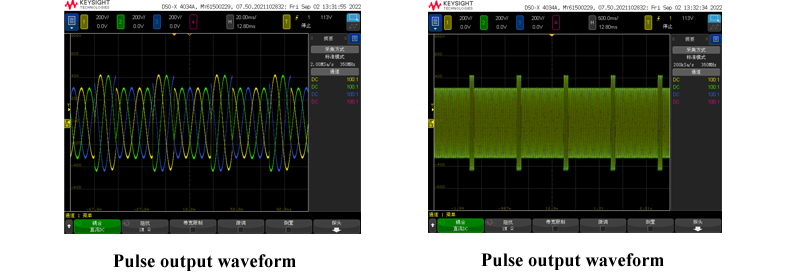
Step mode: also known as staircase mode, where the output voltage gradually
increases or decreases according to the set step size from the initial value.
Each phase's AC voltage, DC voltage, and frequency can be independently set for
initial value and change amount. Angle, waveform, step count, and step time for
each phase can also be set independently.

Harmonic synthesis: the power supply has harmonic editing function(2-50
times), and various harmonic components can be added to the standard sine
wave.lt has 3 sets of percentage harmonic storage groups and 3 sets of amplitude
harmonic storage groups that can be quickly called. The fundamental voltage,
harmonic content,angle, etc., of each phase can be independently set. Under the
percentage mode, the content and angle of each harmonic can be set, with a
single harmonic up to 30%, no limit on total harmonic content, and no limit on
the number of harmonic superimpositions. Under the amplitude mode,specific
voltage values can be set for harmonic compo-nents, without any percentage
relationship with fundamen-tal voltage.

Interharmonic synthesis: the power supply has interhar-monic editing function,
allowing addition of interharmonic components to the standard sine wave.
Interharmonic trigger angle, start-stop frequencies, content, and scanning time
can be set, with an interharmonic frequency range of 16-3000Hz.


